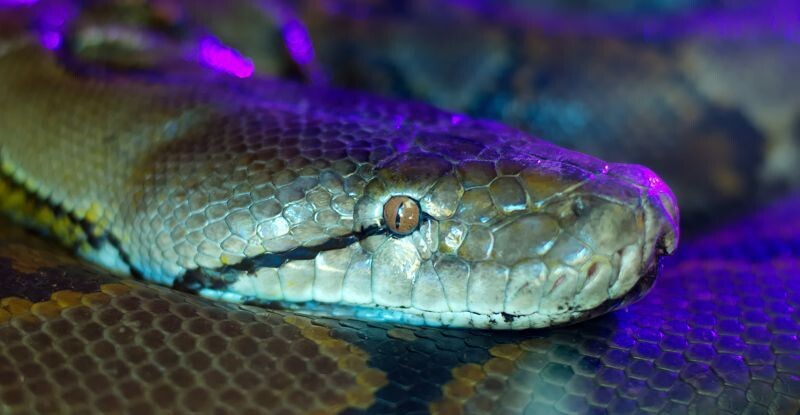
In the 1990s, a giant snake began to silently spread across the state of Florida, United States, instilling terror in its inhabitants and nature. The Burmese python arrived in the northern lands under unusual circumstances, when some owners, unable to control its growth, decided to release them into the vast wetlands of the Everglades.
The state of Florida experienced firsthand the effects of this phenomenon, facing an unexpected threat that came to stay. Hurricane "Andrés" in 1992 played a crucial role in the dispersal of the snakes, by freeing numerous specimens from residents' homes. In the face of this growing threat, an elimination program was activated in 2017, which involved the capture of more than two thousand pythons until 2019, with the support of conservationists and hunters.
One of the most innovative strategies was the Judas technique, which involved placing transmitters on male pythons to track reproductive females and prevent the hatching of their eggs. This method showed great effectiveness in directing captures towards key breeding points, thereby reducing the number of python offspring. Scientists conducted a genetic analysis that revealed the existence of hybrid pythons, adding a new concern: these specimens, having part of the genetics of the Indian python, could survive in colder climates, extending their presence beyond the borders of Florida.
Even in the Florida Keys, sightings of these reptiles swimming in saltwater were recorded, suggesting they could expand into other parts of the country. Florida authorities implemented a capture program to control the invasion of these snakes. The local wildlife, defenseless against such a large predator, began to decline, transforming what was once a wildlife sanctuary into a battlefield.
As the years passed, the giant snake multiplied, and the problem reached proportions that overwhelmed authorities. What seemed like an isolated act soon transformed into an invasion that threatened the ecological balance of the region. The Burmese python is not only known for its impressive size but also for its ability to adapt to various ecosystems and prey on a wide range of species.













